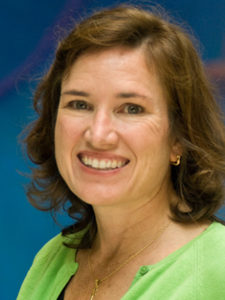
The pediatrics-focused sessions at the ACR/ARHP Annual Meeting will appeal to a broad range of rheumatologists and allied health professionals, including those practitioners who may not treat only children and adolescents, according to Anne Stevens, MD, PhD, Professor and Chief of the Pediatric Rheumatology Division at the University of Washington in Seattle, and a member of the Annual Meeting Planning Committee.
“The Annual Meeting provides a great opportunity to meet up with colleagues around the world and not only learn about the latest developments in our specific fields, but also explore new fields and new ideas,” Dr. Stevens said. “The Annual Meeting is where we forge many of the relationships that we draw on during the rest of the year. It’s where we expand our network, so when we have patient questions or research questions later, we know just whom to call.”
Among the many highlights of this year’s pediatric rheumatology programming, Dr. Stevens recommends a couple of sessions that are likely to stir up a bit of controversy and some debate, including Biologic Classification of JIA (8:30 am Sunday, October 21).
“There is some debate about whether to classify patients by clinical manifestations, as we have been doing, or rather by genetics or genomics, which might bring our JIA patients closer to adult RA patients than we ever dreamed,” Dr. Stevens said. “During this session, the recent ACR update and expansion of ‘Recommendations for the Treatment of JIA’ will be unveiled, which is exciting and, hopefully, not too controversial.”
Another session Dr. Stevens believes is sure to encourage some lively discussion is T2T in JIA: Ultrasound vs. MRI (11:00 am Monday, October 22).
“One of our challenges in pediatric rheumatology is knowing how to tell if a child’s arthritis is active or not. We believe that the MRI is the most sensitive test, but it’s tough to do an MRI in a four-year-old, who will probably need sedation, and an MRI is expensive,” she said. “Ultrasound has promise as a way to quickly assess arthritis in the clinic during the same visit, but the methods are not yet validated for pediatric patients, in whom growing bones and tissues need to be interpreted differently at different ages. This session will include presentations by renowned experts in pediatric ultrasound and MRI, who can give us a balanced assessment, as well as a lively debate, on how to assess the utility of MRI versus ultrasound when monitoring patients with JIA.”
The challenge of detecting and treating temporomandibular joint (TMJ) arthritis will be the topic on an important session, JIA-Associated TMJ Arthritis: New Guidelines for Evaluation, Scoring & Management (11:00 am Tuesday, October 23).
“Delay in treatment of TMJ arthritis can lead to permanent disability, requiring extensive surgeries that may never restore full function,” Dr. Stevens said. “This session will address the best methods to monitor for TMJ arthritis and will include a presentation by an oral surgeon, who will discuss surgical and orthodontic-based methods for treating TMJ arthritis.”
Other sessions Dr. Stevens recommends include Pediatric Rheumatology Year in Review & Awards (12:30 pm Sunday, October 21), Pediatric Uveitis in the Biologic Age: Risk Factors, Treatment & Outcomes (11:00 am Sunday, October 21), and Camps for Kids with Rheumatic Diseases (7:30 am Tuesday, October 23).
With so many sessions to choose from, Dr. Stevens said planning ahead is the key to a great Annual Meeting experience.
“Study the program, and with a little planning, you’ll have a better chance to get to the sessions that are most important to you,” she said. “And be sure to include a couple of sessions on topics you may not have heard of before. That’s the real beauty of this meeting—the opportunity to bend our minds in new ways, to help us think about our patients and our diseases in new ways, so we can find new ways to help our patients.”


